Christiane Helling
Grid-based exoplanet atmospheric mass loss predictions through neural network
Feb 03, 2025Abstract:The fast and accurate estimation of planetary mass-loss rates is critical for planet population and evolution modelling. We use machine learning (ML) for fast interpolation across an existing large grid of hydrodynamic upper atmosphere models, providing mass-loss rates for any planet inside the grid boundaries with superior accuracy compared to previously published interpolation schemes. We consider an already available grid comprising about 11000 hydrodynamic upper atmosphere models for training and generate an additional grid of about 250 models for testing purposes. We develop the ML interpolation scheme (dubbed "atmospheric Mass Loss INquiry frameworK"; MLink) using a Dense Neural Network, further comparing the results with what was obtained employing classical approaches (e.g. linear interpolation and radial basis function-based regression). Finally, we study the impact of the different interpolation schemes on the evolution of a small sample of carefully selected synthetic planets. MLink provides high-quality interpolation across the entire parameter space by significantly reducing both the number of points with large interpolation errors and the maximum interpolation error compared to previously available schemes. For most cases, evolutionary tracks computed employing MLink and classical schemes lead to comparable planetary parameters at Gyr-timescales. However, particularly for planets close to the top edge of the radius gap, the difference between the predicted planetary radii at a given age of tracks obtained employing MLink and classical interpolation schemes can exceed the typical observational uncertainties. Machine learning can be successfully used to estimate atmospheric mass-loss rates from model grids paving the way to explore future larger and more complex grids of models computed accounting for more physical processes.
Machine learning-based classification for Single Photon Space Debris Light Curves
Nov 27, 2024
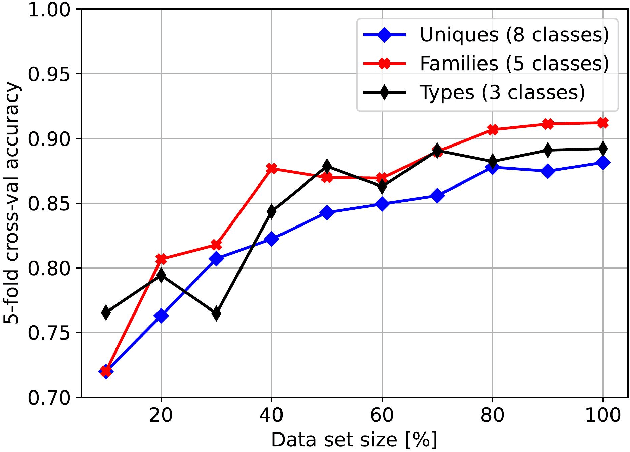
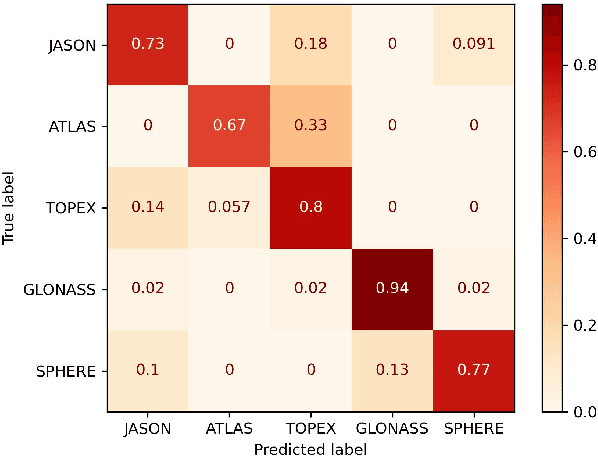
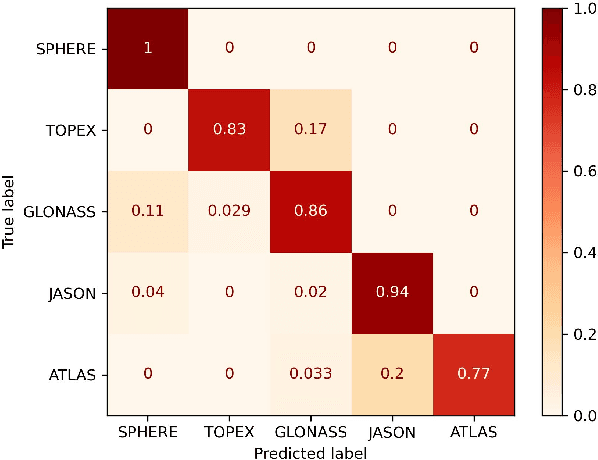
Abstract:The growing number of man-made debris in Earth's orbit poses a threat to active satellite missions due to the risk of collision. Characterizing unknown debris is, therefore, of high interest. Light Curves (LCs) are temporal variations of object brightness and have been shown to contain information such as shape, attitude, and rotational state. Since 2015, the Satellite Laser Ranging (SLR) group of Space Research Institute (IWF) Graz has been building a space debris LC catalogue. The LCs are captured on a Single Photon basis, which sets them apart from CCD-based measurements. In recent years, Machine Learning (ML) models have emerged as a viable technique for analyzing LCs. This work aims to classify Single Photon Space Debris using the ML framework. We have explored LC classification using k-Nearest Neighbour (k-NN), Random Forest (RDF), XGBoost (XGB), and Convolutional Neural Network (CNN) classifiers in order to assess the difference in performance between traditional and deep models. Instead of performing classification on the direct LCs data, we extracted features from the data first using an automated pipeline. We apply our models on three tasks, which are classifying individual objects, objects grouped into families according to origin (e.g., GLONASS satellites), and grouping into general types (e.g., rocket bodies). We successfully classified Space Debris LCs captured on Single Photon basis, obtaining accuracies as high as 90.7%. Further, our experiments show that the classifiers provide better classification accuracy with automated extracted features than other methods.
Harnessing machine learning for accurate treatment of overlapping opacity species in GCMs
Nov 01, 2023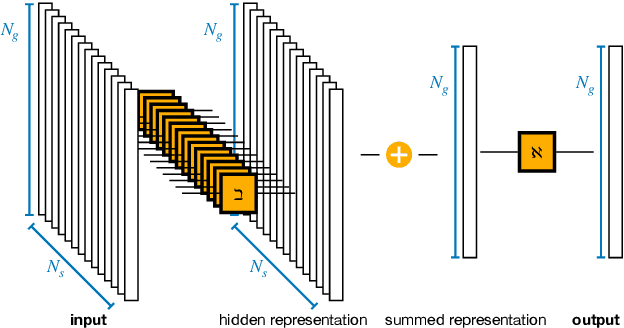

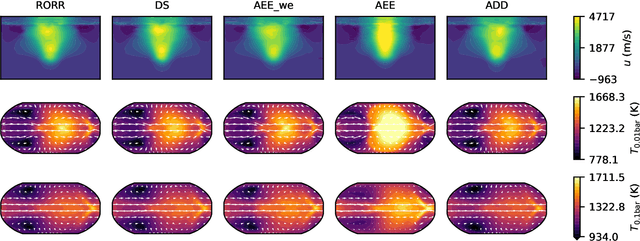
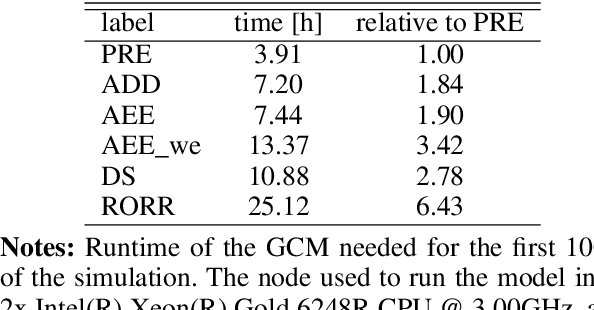
Abstract:To understand high precision observations of exoplanets and brown dwarfs, we need detailed and complex general circulation models (GCMs) that incorporate hydrodynamics, chemistry, and radiation. In this study, we specifically examine the coupling between chemistry and radiation in GCMs and compare different methods for mixing opacities of different chemical species in the correlated-k assumption, when equilibrium chemistry cannot be assumed. We propose a fast machine learning method based on DeepSets (DS), which effectively combines individual correlated-k opacities (k-tables). We evaluate the DS method alongside other published methods like adaptive equivalent extinction (AEE) and random overlap with rebinning and resorting (RORR). We integrate these mixing methods into our GCM (expeRT/MITgcm) and assess their accuracy and performance for the example of the hot Jupiter HD~209458 b. Our findings indicate that the DS method is both accurate and efficient for GCM usage, whereas RORR is too slow. Additionally, we observe that the accuracy of AEE depends on its specific implementation and may introduce numerical issues in achieving radiative transfer solution convergence. We then apply the DS mixing method in a simplified chemical disequilibrium situation, where we model the rainout of TiO and VO, and confirm that the rainout of TiO and VO would hinder the formation of a stratosphere. To further expedite the development of consistent disequilibrium chemistry calculations in GCMs, we provide documentation and code for coupling the DS mixing method with correlated-k radiative transfer solvers. The DS method has been extensively tested to be accurate enough for GCMs, however, other methods might be needed for accelerating atmospheric retrievals.
 Add to Chrome
Add to Chrome Add to Firefox
Add to Firefox Add to Edge
Add to Edge